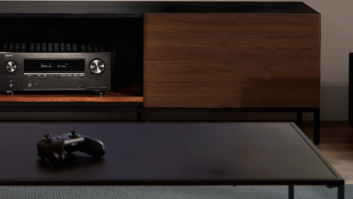TWICE: How much damage could Wal-Mart ultimately inflict on the specialty CE channel as its moves beyond commodity CE?
Neal Bobrick, Ultimate Electronics: We all have to look over our shoulders at Wal-Mart. Their model is obviously different from ours, but clearly Wal-Mart is a player.
They’re getting into music now, and they’re driving prices down. We’ve seen them go from 99-cent values down to 89 cents. Eventually you’ll see 10 for a dollar. Where’s the money? Is it in the device? Is there a trail to the networked home?
I think, though, that it comes down to the knowledge that the sales associate can provide for the consumer. There’s a blend of things that Wal-Mart brings to the consumer, but I just don’t think their forte is going to be CE.
Still, we have a much tougher job than Wal-Mart or even Best Buy. Customers visit our stores two, three, four times a year, and they visit a Best Buy store two, three, four times a month. They visit Wal-Mart two, three, four times a week.
As larger retailers like Wal-Mart start exposing these customers to technology products, it will be important for us and others to make sure that we’ve got an experience that brings them into our stores, and not just pick up a plasma while they’re shopping for a box of Triscuits.
John Schlenner, Sears: Your question has a lot to do with the technology curve. How high will the vendors let Wal-Mart go? Will the vendors give them the same products they’re giving us? That would force them to compete not just with our cost structure, but also with their cost structure.
We’re looking very hard at what each vendor is doing with its channel management strategy. That’s going to affect how we eventually end up going to market. The consumer can come to us and buy a name brand, or go to Wal-Mart and buy a name brand. What is the difference? A lot of it will fall back on the vendor.
Tom Edwards, Pacific Media Associates: Maybe the top-line manufactures won’t be doing that, but all of the Chinese manufactures coming in are dying for volume.
And while the customer is also a little bit more educated, Wal-Mart really doesn’t have the infrastructure to sell a product that people aren’t aware of. They can’t explain a plasma-display screen. If they ever tried to explain a high-altitude plasma panel, it would just blow their minds on the retail floor. The kid with pimples who is there at night just won’t cut it.
Larry Mondry, CompUSA: I agree. I don’t know that I like it, but the solution is more technology. Twenty-five years ago, somebody had the first Sony SL-7200 Betamax, and that was technology. Clearly, Wal-Mart, in its day, would have been unable to sell it.
However, as the technology becomes more ubiquitous, and frankly, commoditizes, [Wal-Mart is] in a position to sell anything they want to. Once it becomes the Walkman, in that you don’t need a lot of product knowledge and it’s understandable and everyone and their grandma has it, then they can certainly sell it. We can’t think they won’t.
They will sell plasma TVs and everything else, provided it gets to the point where it works within their business model and they don’t have to provide a high level of customer service. That’s not in terms of a pleasant smile, but in terms of knowing what they’re talking about.
If that’s the case, it doesn’t bode well for us if we were to get into a business that isn’t much in the way of “sunrise technology.”
On the other hand, I don’t see them being terribly successful. We talked about the networked home. I don’t see them competing with us all of a sudden for the installation of home networks around the country. Maybe someday they will, when everybody does it and it’s easy. I’m just very hopeful that all those smart technology minds will have lots of great new stuff for us to sell by then.
Mike Linton, Best Buy: We would agree with that. We would say that Wal-Mart is a much smarter place. It’s moving as fast as it can. No one is going to slow it down, and it’s going to stay that way for a long time.
TWICE: They seem to have Best Buy in their sights. What are you doing to protect your turf?
Linton: We see a bunch of factors in play: Convergence of technologies, brand experiences, cost, and the need to build relationships with consumers, and we’re working on all of those. We’ve also been working on expanding our brand into different spaces. That’s what drove the McDonald’s promotion and the Rolling Stones DVD deal for us. The loyalty program, Rewards Zone, is an extension of the in-store experience and also extends the brand in the marketplace for the long term.
We see the marketplace as being just relentless for a while, though. It is under serious stress from a bunch of different things, and surely Wal-Mart is a big part of that.













